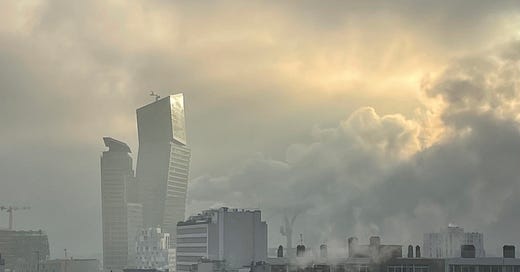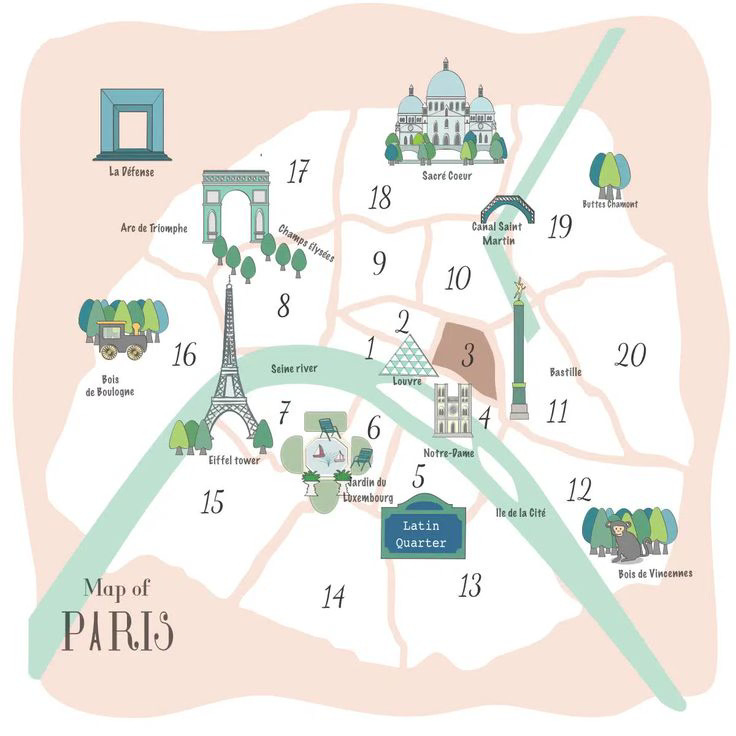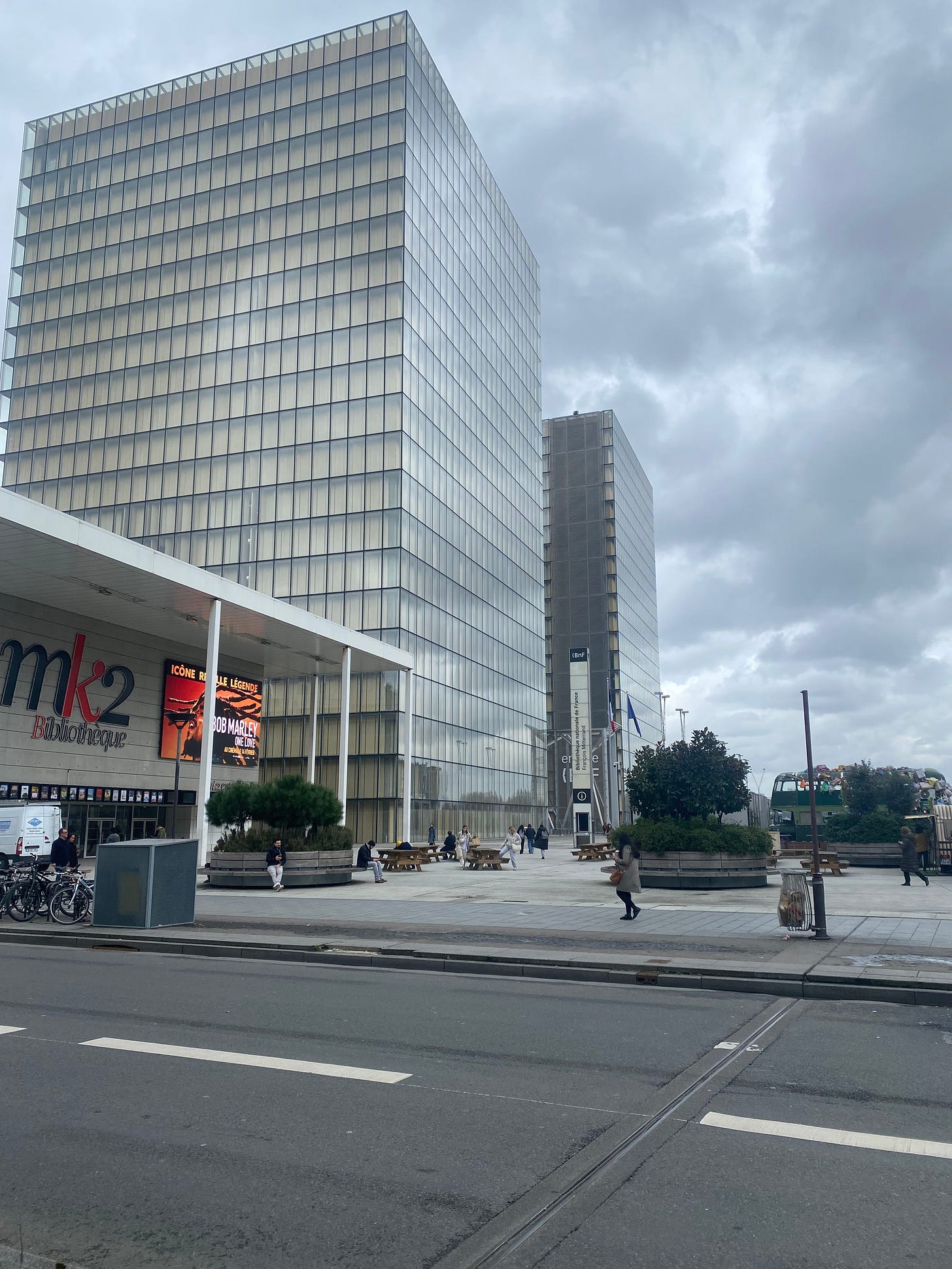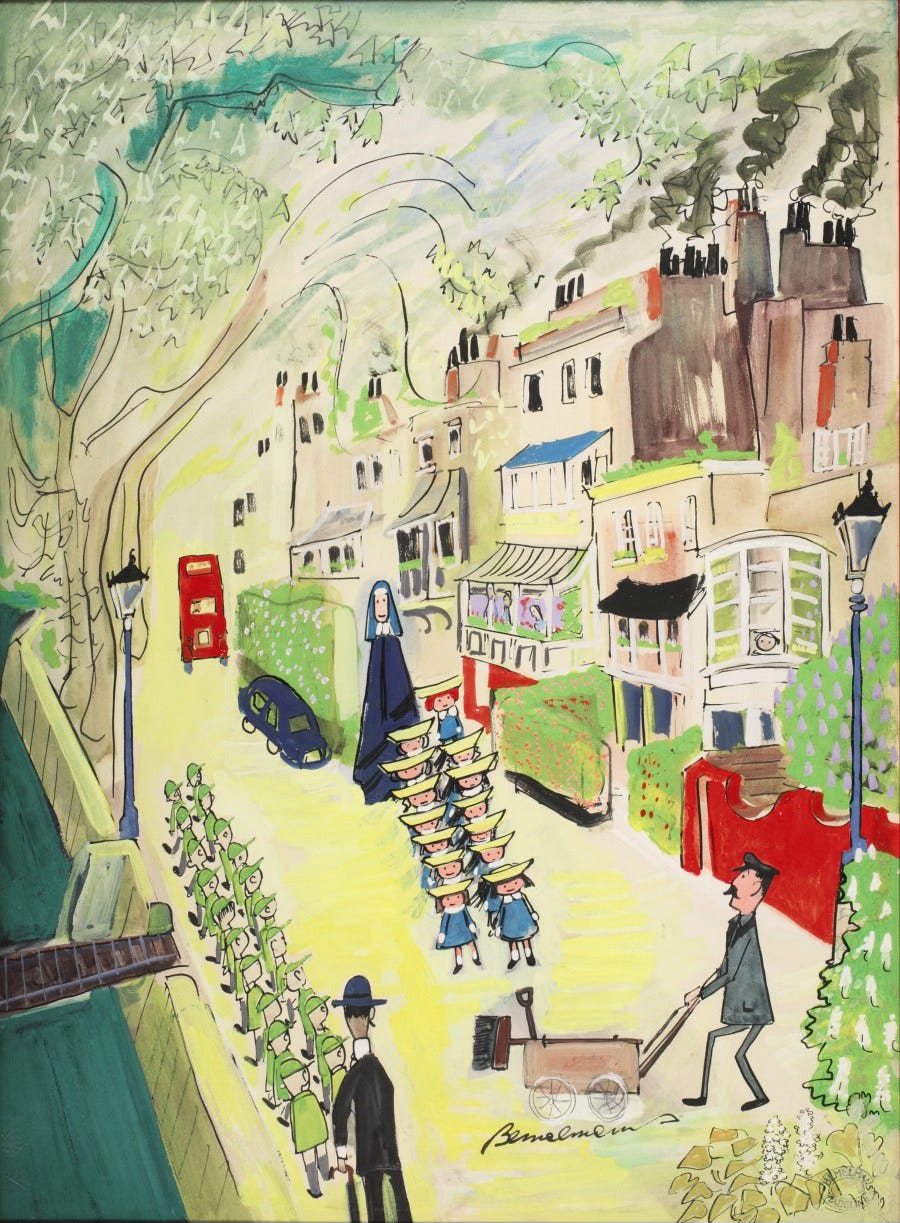Let me introduce you to the other Paris. The one with office towers, public housing and grit. Beinvenue to the 13eme arrondissement, mes amis.
The Tours Duo, by the architect Jean Nouvel, looking like an old robot couple either out for a pre-dawn stroll or to destroy the city: you decide.
I know this swath of the city because when my mother-in-law passed away, she left her apartment in the 13th to her son, my husband, and it’s where we stay when we come for work or a weekend. Would I prefer to be somewhere more central, classically elegant or quaint? Oh, absolutely. But it’s hard to argue with free.
The post-war landscape of the 13th is not what most people (me) think of when they imagine Paris; it’s punctuated with industrial highrises and stacked with modern apartment buildings — not a single Haussmann boulevard to be found. While it’s not the chocolate and flan-dipped Paris of your fantasies, it is, however, the Paris of everyday Parisians.
Located in the city's eastern portion, the 13th sits along the left bank and is noticeably absent of any landmarks you might want to visit.
Please note the classically charming map of Paris!
Originally a village outside of Paris, the 13th was annexed in 1860 and left to its own devices (AKA neglected) for most of the 19th century. And then Mitterand got busy with his grand plan to remake the city in his image, and the 13th, with its abandoned factories and empty lots, was ripe for the picking.
His first big project was his eponymous library, the Bibliotheque Francois Mitterand. The largest, costliest and most debated building erected in Paris in modern times. It was designed by Dominique Perrault to look like four open books, which sounds groovy until you try to do any research there, but that’s a story for another day.
Yes, the hood is changing. New offices and big businesses (Accenture) are opening every day. We’ve even got a giant state-funded tech incubator (Station F) in the old abandoned train garage populated with self-important young techies living out their start-up dreams in a vast concrete space that, if you squint, could almost be San Francisco. It’s all part of the endless state-envisioned urban redevelopment that, for better or worse, makes Paris visually remarkable and, for upwards of 3 million people, pretty damn livable.
Lest I leave you with the impression that all change is bad; for those of us here in the once forgotten and long neglected, but no more, 13th, the absolute best thing to happen is the metro line 14. It's clean, swift, and driverless, which means we are unaffected by train strikes — shitty for the labor moment but pretty great for us.
Let me leave you with a panoramic view from my husband’s apartment, looking east towards the Seine, with the new robo-towers that now dominate the skyline, and the library just visible at the very end.
If this real-life version of Paris upsets you, and I can understand that it might, it’s hard when dreams die; there is always the delightful Francophile
to restore your champagne and cheese-filled dreams of the City of Light.The smallest one was Madeline — ah, now this is Paris.









Sacre bleu et merci beaucoup!
At least a ride north takes you two into more vibrant (?) parts of Paris, and as you say: hard to argue
with free!